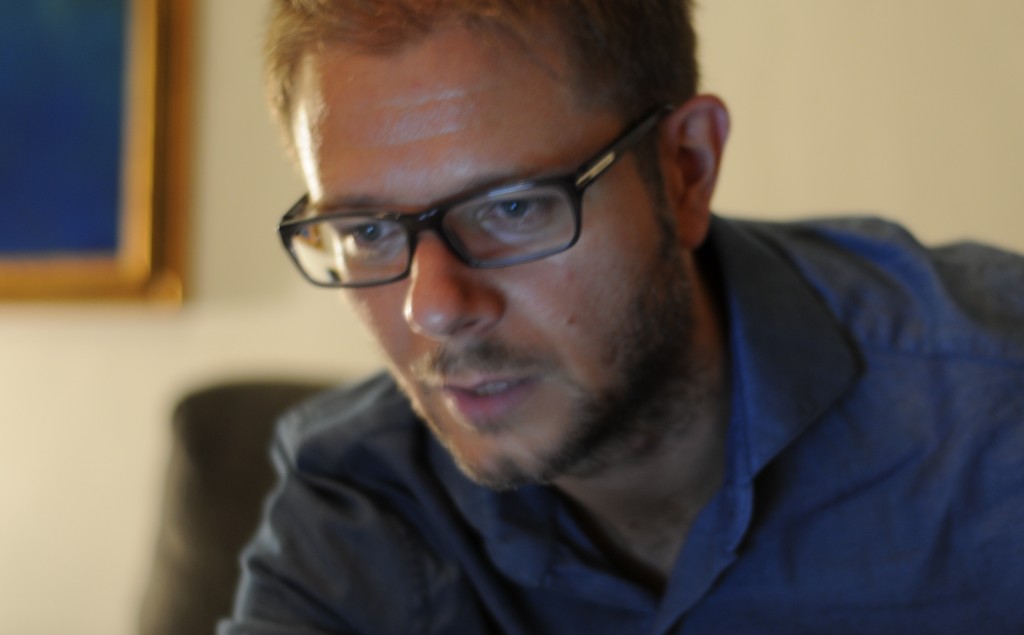GeoTalk, featuring short interviews with geoscientists about their research, continues this month with a Q&A with Dr Giuliano Di Baldassarre (UNESCO-IHE Institute for Water Education) regarding his work on floods, population changes, and risk prevention. If you’d like to suggest a scientist for an interview, please contact Bárbara Ferreira.
First, could you introduce yourself and let us know a bit about your current research topic(s)?
I was born in L’Aquila, Italy, in 1978. I have been fascinated by hydrological processes since I was a child, when I used to measure the velocity of water in rivers using technology as rough as floating pieces of wood! A few years later, I also started to realize the actual importance of studying hydrological processes. This is why I ended up studying hydrology and, in 2006, I got a PhD in water engineering at the University of Bologna. After that, I was a post-doc at the University of Bristol, United Kingdom, where I could advance my research on hydraulic modelling of floods and remote sensing observations of inundation patterns. Lastly, I moved to Delft, The Netherlands, and started working as a senior lecturer at the UNESCO-IHE Institute for Water Education. In Delft, I kept on exploring the value of space-borne data to support flood hydrology and, along with that, had the opportunity to start developing unconventional approaches for analyzing both biophysical and social processes in African floodplains.
Earlier this year, your received the EGU Division Outstanding Young Scientist Award for your “remarkable contribution to understanding and communicating the impact of global changes on flood risk”. Could you summarise the work you have done in this area, emphasising its wider importance?
My research focuses on the study of floodplain processes. As a matter of fact, floodplains are among the most precious ecosystems for providing services to the environment and supporting biodiversity. At the same time, since the earliest recorded civilizations – such as those in Mesopotamia and Egypt that developed in the fertile riparian areas of the Tigris and Euphrates and Nile rivers – human societies tend to develop in floodplain regions. As a result, flooding is nowadays the most damaging natural hazard and causes about half of all deaths from climate-related disasters. Sadly, flood losses and fatalities are dramatically increasing in many parts of the world because of continuous population growth in floodplains in addition to changes in land use and climate. In this context, my research work has focused on three major points: the need to understand flood processes and improve our prediction skills, the opportunity offered by the growing availability of remote sensing data to monitor floodplain areas, and the challenge of estimating (and communicating) the uncertainty intrinsic to any floodplain modelling exercise.
One of your research topics is flood risk and population changes. In what ways are populations more at risk of suffering the impacts of floods today than 50 years ago?
Flood related fatalities as well as associated economic losses have increased dramatically in many regions of the world. To identify the causes for such increased flood damages, one of the research lines I have recently been developing aims at analyzing not only hydrological data but also human population dynamics, since natural flood events can turn into flood disasters only if they coincide with vulnerable societies. One of the most interesting outcomes from the analysis of a large dataset of floods in Africa was that intensive and unplanned urbanization in floodplain areas driven by population growth has been playing a major role in increasing flood losses and fatalities.
You also work on initiatives to prevent and mitigate the impacts of water-related natural hazards such as floods and landslides. What can be done to prevent risk and what role can scientists play in this area?
Yes, I am leading a research project, KULTURisk, which has been funded by the EU’s Seventh Framework Programme (FP7). The main goal of KULTURisk is to develop a culture of risk prevention in Europe and demonstrate its advantages over traditional post-disaster recovery approaches. Depending on the peculiarity of the problem at hand, there are different measures that can be implemented to prevent water-related disasters: flood forecasting and early warning systems, non-structural options such as flood mapping and land-use planning, risk transfer strategies (insurance policies), and more traditional structural measures, such as dikes or levees. An appropriate planning of these prevention measures requires an active dialogue with public and private stakeholders. Given that prevention is hardly ever awarded, I think that scientists should provide a clear demonstration that risk prevention is often a sensible investment since the costs of preventive measures are often many times less than those of post-event recovery.
Last but not the least, can you tell us a bit about your future research plans?
Given the aforementioned relevance of floodplain systems, many hydrological studies have investigated the impact of human activities (e.g. land-use changes, urbanization, river training) on the frequency and magnitude of floods. Meanwhile, a number of social studies have examined how the frequency and severity of flooding often determine whether or not human developments in floodplains are desirable. However, while human activities significantly change the frequency and severity of flooding, the frequency and severity of flooding in turn affect human developments in floodplain regions. Yet, these dynamic interactions between floods and societies and the associated feedback mechanisms remain largely unexplored and poorly understood. In hydrology, for instance, humans are typically considered as external forcing (or boundary condition) without representing the relevant feedback mechanisms. Thus, our predictions of future trajectories are often inappropriate.
I think that innovative research efforts are needed to better understand the behaviour of floodplains as coupled human-water systems and explore the feedback loops, reciprocal effects, surprises, and threshold mechanisms, taking place in floodplain systems. This type of research would enable a better understanding of how (and to what extent) the occurrences of floods shape diverse human developments while, at the same time, human activities shape the magnitude and frequency of floods.

